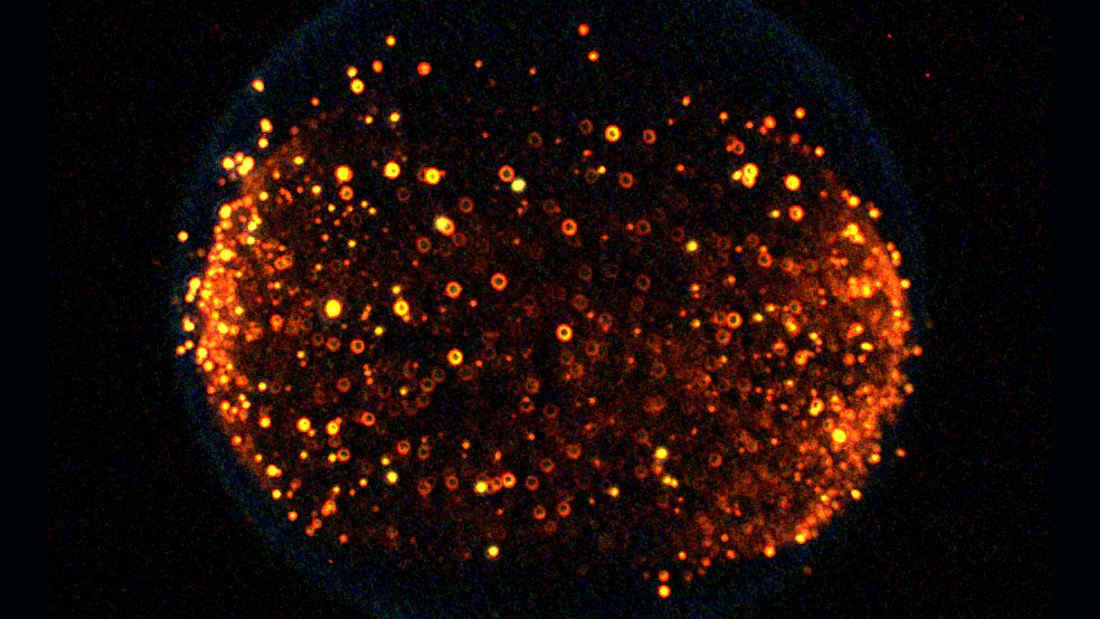


Update: SpaceX delayed its launch due to high winds. The company will try again Thursday afternoon.
It’s usually never a good idea to play with fire, and that goes double inside a spacecraft 250 miles above Earth. But in the coming weeks, astronauts aboard the International Space Station will be told to light a fire inside a miniature wind tunnel, in an effort to understand how fire behaves and spreads in microgravity.
On Earth, gravity helps feed fires by pushing cold, dense air downward, where it creates a convection process that feeds new oxygen to the rising flames. When you take gravity out of the equation, however, fire becomes much more unpredictable. If there’s ever an actual fire to deal with on the ISS or other spacecraft, we need to understand how it will spread in a confined, pressurized space.
This isn’t the first time astronauts have set fires in a spacecraft on purpose. In 2008, NASA sent the glovebox-sized Combustion Integrated Rack experiment to the ISS to test out small fires in microgravity. And a trio of experiments called SAFFIRE, conducted from 2016 to 2017, intentionally lit up unoccupied Cygnus spacecraft that had already completed their resupply missions for the ISS and were poised to burn up in Earth’s atmosphere anyway. Those experiments showed that steady flames were achievable in microgravity and that they generally spread more slowly than they would on Earth. Many materials, like silicone, did not catch on fire in microgravity, even under high-oxygen conditions.
But in the new experiment, called Confined Combustion, the flame is going to be sparked within the ISS itself. Earlier in the decade, NASA delivered a small wind tunnel, the size of a toaster, to the station to examine how to extinguish any fires that might occur in microgravity. Today’s resupply mission will deliver some modifications necessary to run Confined Combustion.
The experiment will light a fuel sample stored inside the device, using artificial walls to create chambers inside it. Over a six-month period, astronauts will ignite the fuel, using different wall configurations to manipulate the direction and flow speed of the fire (between one and four inches per second). The goal is to learn in sharper detail how a fire spreads through an environment and what happens when there are obstacles in the way.
“The astronauts are often very excited to do the tests,” says study co-investigator Paul V. Ferkul, from the Universities Space Research Association in Cleveland. So many experiments on the ISS don’t yield very immediate results, he says, and “it’s kind of mesmerizing to see these things burning without gravity present.”
The researchers hope to use the experiment to gain some insights into how we can design and engineer buildings to prevent and limit the spread of fires here on Earth.
Confined Combustion is just one of several big experiments SpaceX is taking to the ISS on Wednesday. Some rodents are also going up for 30 days, where they will be treated with an agent that blocks the function of myostatin (a protein that promotes muscle growth). This could help researchers see if we might be able to stave off bone and muscle degradation in astronauts during spaceflight. Some of those mice—the researchers call them “mighty mice”—are actually genetically modified to block myostatin directly.
Beer company Anheuser-Busch will move forward with yet another test that investigates how to grow barley in microgravity. Mexico is sending up a cubesat built by students that will be deployed from the ISS for communications testing. NASA’s Jet Propulsion Laboratory is sending a Cold Atom Laboratory that will run a host of physics experiments at just one ten billionth of a degree above absolute zero. And NASA will send up a docking station that will help the agency finally test out a robot that’s designed to look for leaks within a spacecraft.